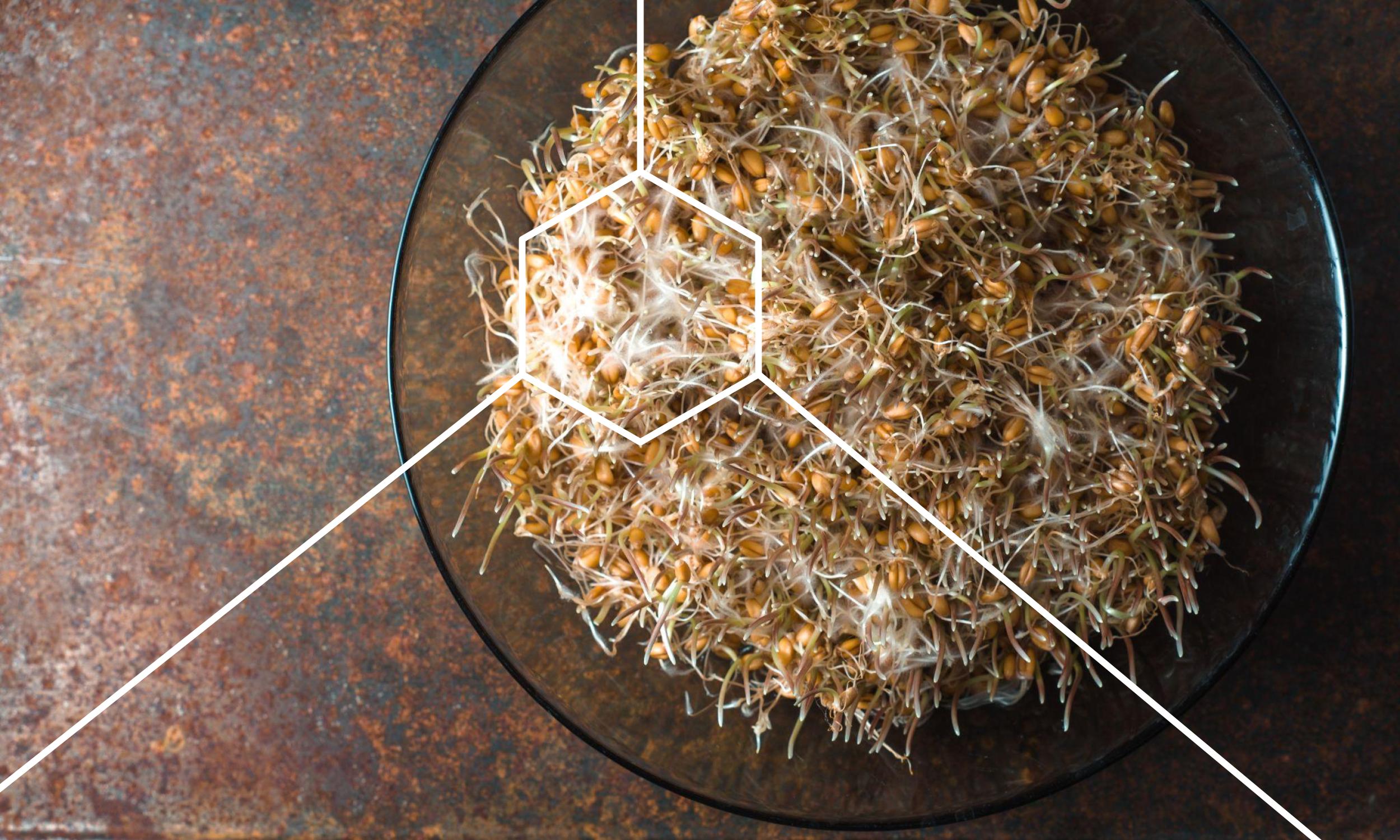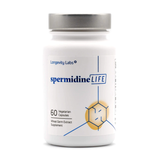
What is wheat germ? Wheat germ is a crunchy cream-colored substance that looks like chopped nuts or bread crumbs. It is a great source of Omega-3 fatty acids, vitamin B, calcium, and iron. Health benefits of wheat germ include lower anxiety, cholesterol, and inflammation in the body. Wheat germ is also a great source of spermidine and provides all the spermidine benefits you need for a healthy lifestyle. Wheat germ is great to add to smoothies, yogurt parfaits, or oatmeal, but what exactly does wheat germ do?
What Is Wheat Germ Used For?
Wheat germ is often added to food products to increase nutritional content. It is the most nutritious part of wheat. Wheat germ is usually removed when making processed foods because it increases shelf life. This particular part of the wheat helps the plant reproduce.
This nutrient dense food provides the body with fiber, antioxidants, minerals, and vitamins which makes wheat germ a solution for constipation. There are many wheat germ uses, among the most common is boiling wheat germ to make wheat germ oil. Wheat germ oil benefits can be obtained through cooking as well as hair and skin treatments. Fermented wheat germ is used in cancer treatment experiments and also used to help treat rheumatory arthritis.
Benefits Of Wheat Germ
Wheat germ is full of vitamins and minerals that help boost the immune system. There are many benefits of wheat germ, including:
- Antioxidants - A large amount of wheat germ antioxidants comes from Vitamin E oil found in this plant. These antioxidants help the body protect itself from disease, sickness, and fatigue.
- Immune Support - Wheat germ is high in vegetable proteins, fiber, and omega 3 fatty acids. It is also a good source of magnesium, zinc, thiamine, folate, potassium, and phosphorus, along with other essential vitamins and minerals. These nutrients give the body what it needs to develop a strong immune system.
- Digestive benefits - The dietary fiber found in this nutritious food keeps your bowels moving regularly. Fiber passes through your digestive system without being digested. This process helps to add mass to your bowels, moving the waste out of your body faster.
- Energy Boosting - In addition to helping with digestion, the fiber and other nutrients help the body build needed energy. It also helps balance out blood sugar levels. The fiber keeps your blood sugar from spiking and crashing, which can certainly affect energy levels, among other bodily processes.
- Cardiovascular Health - Numerous studies were conducted on the correlation between heart disease and whole-grain diets. In every study, they found that people who ate a diet higher in whole grains had a lower risk of stroke and heart disease. It also helps to lower your cholesterol which decreases cardiovascular disease.
- Anti-Aging Benefits - Suffering from nutrient deficiencies can make your body age faster than it should. Wheat germ has many vitamins and minerals, as mentioned earlier, with the addition of manganese. Manganese helps prevent bone deterioration. This along with calcium and vitamin K and D, help to build strong bones. Phosphorus is also in wheat germ and helps to repair damaged tissue, which is highly beneficial to the skin that renews every several weeks.
- Nervous Systems Support - It holds a variety of B vitamins which aid the mind and nervous system in preventing stress damage, anxiety, and mood stabilization. It also helps you focus and concentrate on tasks you are trying to carry out. These nutrients help nerve cells communicate more efficiently.
- Helps with Fertility and Pregnancy - Wheat germ oil can be used for fertility. Folate is an important nutrient needed to help support a healthy pregnancy, and wheat germ is a great source of this. Fertility can also be the result of not getting the right nutrients. It is a well-balanced food that is full of necessary vitamins and minerals to promote reproductive health.
Does Wheat Germ Help With Constipation?
Wheat germ is high in fiber, so it can help with constipation. For many people they lack proper fiber intake in their diets. Adding this fiber-rich food to your diet can help your bowel movements become more regular because of its increased levels of insoluble fiber. Insoluble fiber does not break down in the digestive system, so it helps movement to occur more frequently.
Some health educators suggest learning more about where your wheat germs come from before digesting it. Conventionally grown wheat germ may have pesticides and weed killers that can compromise gut health and cause autoimmune diseases. Going with certified organically grown wheat is the best option. Also, it’s important to make sure you do not have a gluten allergy as wheat germ has gluten.
Is Wheat Germ Anti-Inflammatory?
For most people, one of the benefits of wheat germ is reduction in inflammation. It has high levels of antioxidants which fight free radicals that cause inflammation and tissue damage. Inflammation is one of the underlying causes of cancer. As mentioned earlier, it is also fermented by adding baker’s yeast which causes it to activate compounds called benzoquinones. Many cancer studies show fermented wheat germ helps decrease the regrowth of cancerous tumors and increases a patient's life expectancy.
However, there are some people who do not do as well in regards to inflammation. Some people notice an increase in inflammation after digesting wheat in any form. They may have a gluten intolerance or just do not digest it very well. There is conflicting data out there about this, and it is best to determine the anti-inflammatory effects on a case by case basis as everyone is different.
What Is The Best Way To Eat Wheat Germ?
You can add wheat germ to your diet in many ways. Incorporating it into your diet just a few times a week can offer the body some great benefits. Here are some suggestions on how to eat wheat germ by adding it to your daily meals:
- Smoothie
- Yogurt
- Oatmeal
- Muffins
- Pancakes
- Protein Shakes
- Cereal
- Casseroles
- Meatloaf
- Soups
- Meatballs
- Breaded Chicken
Is Wheat Germ Used To Help Someone Gain Weight?
You may wonder does wheat germ help gain weight and you are correct! It holds 110 calories per serving, so it can certainly help someone gain weight. Adding a few servings per day provides extra calories to help you gain weight. If you are looking to add muscle to your body, this route may help you. This calorie packed food also helps provide the body with more energy and stamina.
Some bodybuilders and fitness professionals use this muscle building food to help increase blood flow to their muscle groups while building stamina. The wheat germ contains an amino acid called arginine, which produces nitric oxide that helps raise blood circulation of nutrients throughout the body. Octacosanol is an alcohol produced by this plant that also helps build muscle strength. Adding this to your nutritional regimen can help build weight while increasing muscle.
Is Wheat Germ Good For You?
Wheat germ is good for you as it provides many key vitamins and minerals your body needs. It helps you have more energy and improves digestion. However, there are certain people who have gluten allergies or sensitivities.
These people should avoid wheat germ as it may cause reactions like digestive upset, autoimmune issues, and allergy symptoms. Those with celiac disease should not eat wheat germ as it would not be good for them. For most people, there are many health benefits of wheat germ.
Is Wheat Germ Good For Your Hair
One of the many wheat germ benefits is it is great for your hair. It has many long-chain fatty acids which give your hair moisture and softness. When made into an oil, it’s very easily absorbed by the hair. With all the vitamin B, vitamin E, and fatty acids, this oil helps to restore hair after damage. There are many wheat germ hair benefits that also help prevent frizz and breakage.
Wheat germ oil helps stimulate proper blood flow throughout the body helping with hair growth. Rubbing this oil throughout your hair one to two times per week can produce benefits. The increase in blood flow helps strengthen hair follicles which also reduces hair loss. Many people use a hair shower cap and allow the oil to soak in overnight and then rinse and shampoo the oil out the next day.







